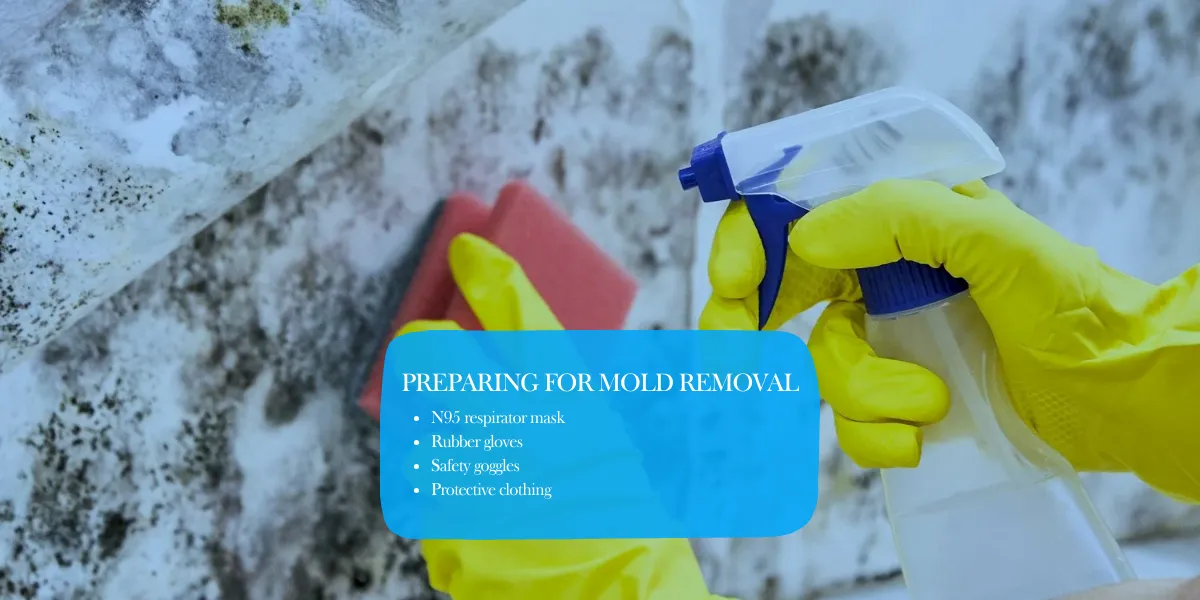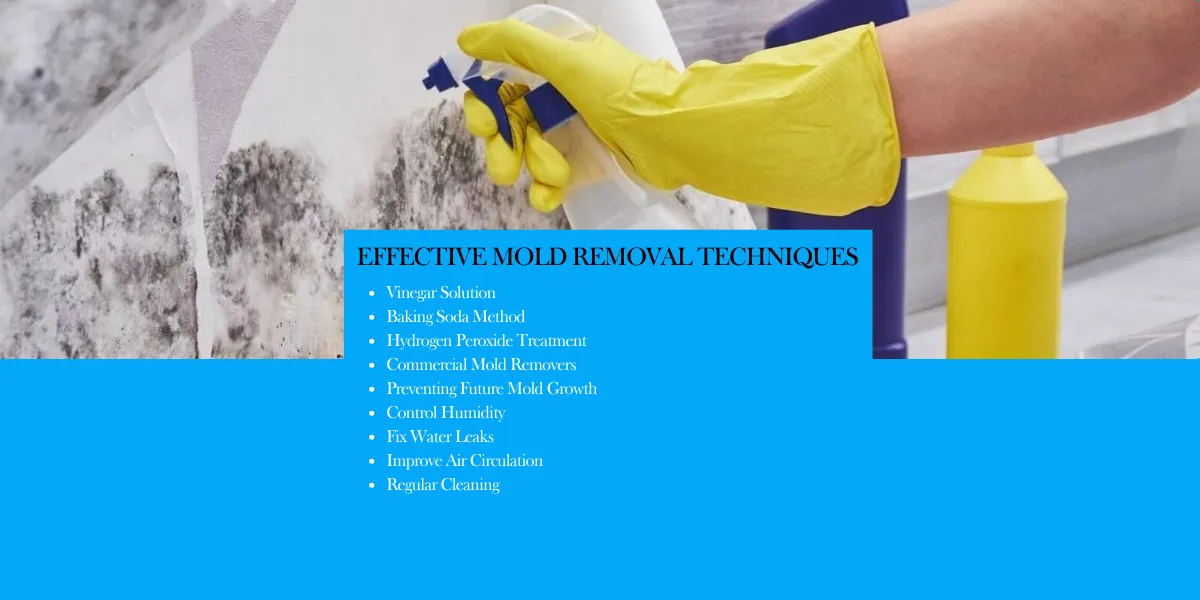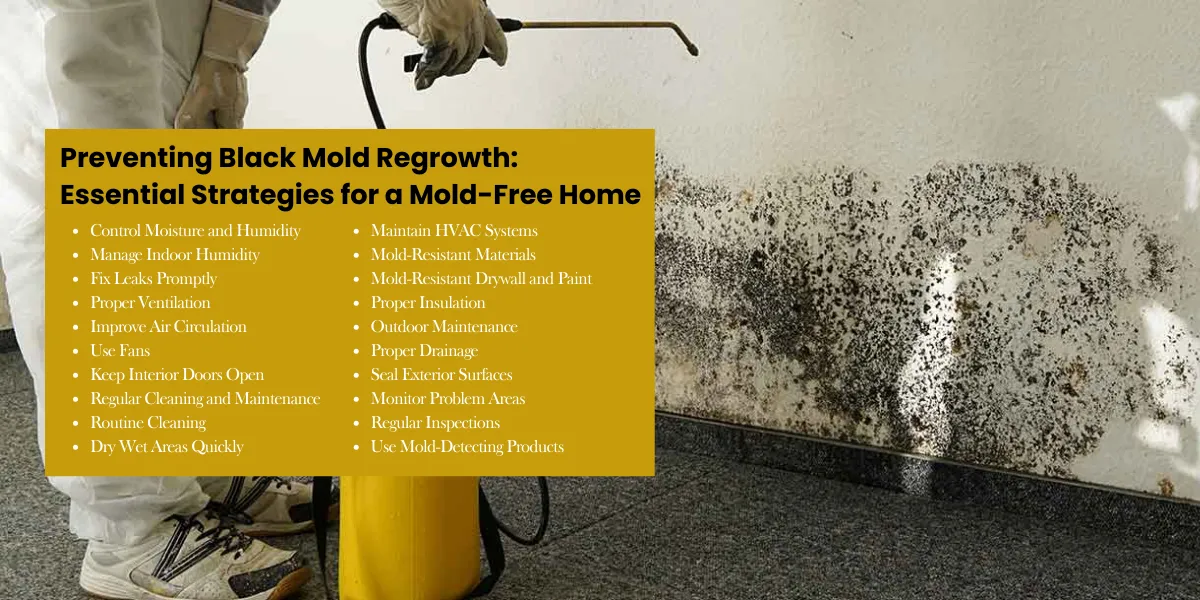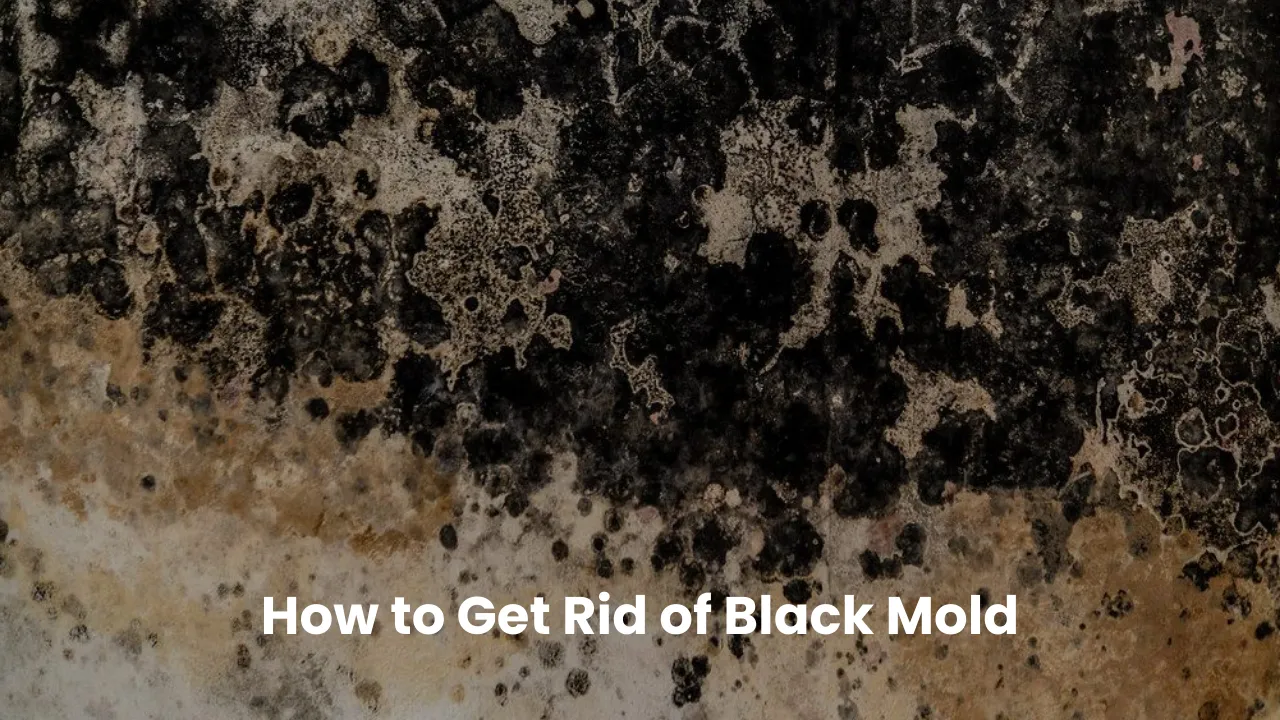Black mold is a common household problem that can pose serious health risks if left untreated. This guide will walk you through effective methods to identify, remove, and prevent black mold in your home.
Understanding Black Mold
Black mold, scientifically known as Stachybotrys chartarum, is a type of fungus that thrives in damp, humid environments. It’s characterized by its dark green or black appearance and a distinct musty odor. While not all black-colored molds are toxic, it’s essential to address any mold growth promptly to maintain a healthy living space.
Identifying Black Mold
Before you can tackle black mold, you need to identify it correctly. Look for dark, spotty growths on walls, ceilings, or other surfaces, especially in areas prone to moisture. Common locations include bathrooms, basements, and areas with water damage. If you notice a musty smell or experience unexplained respiratory issues, these could be signs of hidden mold growth.
Preparing for Mold Removal

Safety should be your top priority when dealing with black mold. Before you begin the removal process, gather the necessary protective equipment:
- N95 respirator mask
- Rubber gloves
- Safety goggles
- Protective clothing
Ensure proper ventilation by opening windows and doors. If the affected area is large or if you have health concerns, consider hiring a professional mold remediation service.
Effective Mold Removal Techniques

Vinegar Solution
White vinegar is a natural and effective mold killer. Pour undiluted white vinegar into a spray bottle and apply it directly to the moldy surface. Let it sit for an hour, then wipe the area clean with water and allow it to dry thoroughly.
Baking Soda Method
Create a paste by mixing baking soda with water. Apply this paste to the moldy area and scrub gently with a brush. Rinse the surface and reapply a thin layer of baking soda, allowing it to dry. This will help prevent future mold growth.
Hydrogen Peroxide Treatment
For non-porous surfaces, a 3% hydrogen peroxide solution can be effective. Spray it on the mold, let it sit for 10 minutes, then scrub the area and wipe it clean. This method is particularly useful for light-colored surfaces as it won’t cause discoloration.
Commercial Mold Removers
There are many commercial mold removal products available. Choose one that’s appropriate for the surface you’re treating and follow the manufacturer’s instructions carefully.
Preventing Future Mold Growth
After removing the mold, it’s crucial to address the underlying moisture issue to prevent recurrence. Here are some preventive measures:
Control Humidity
Keep indoor humidity levels below 60% using dehumidifiers or air conditioners. Proper ventilation, especially in bathrooms and kitchens, is essential.
Fix Water Leaks
Promptly repair any leaks in roofs, walls, or plumbing to prevent moisture accumulation.
Improve Air Circulation
Use fans and open windows to promote air circulation, reducing the likelihood of mold growth.
Regular Cleaning
Maintain a regular cleaning schedule, paying special attention to areas prone to moisture.
When to Seek Professional Help
While many mold problems can be handled DIY, some situations require professional intervention. Consider calling a mold remediation specialist if:
- The mold covers a large area (more than 10 square feet)
- You suspect mold in your HVAC system
- The mold growth is due to contaminated water
- You have underlying health conditions that could be exacerbated by mold exposure
Preventing Black Mold Regrowth: Essential Strategies for a Mold-Free Home

After successfully removing black mold from your home, it’s crucial to implement preventive measures to ensure it doesn’t return. By addressing the root causes of mold growth and maintaining a healthy indoor environment, you can significantly reduce the risk of recurrence.
Control Moisture and Humidity
The most critical factor in preventing black mold regrowth is controlling moisture levels in your home. Mold thrives in damp environments, so keeping your living spaces dry is essential.
Manage Indoor Humidity
Maintain indoor humidity levels between 30% and 50%. Use dehumidifiers in areas prone to moisture, such as basements, bathrooms, and kitchens. Consider installing humidity sensors to monitor levels accurately.
Fix Leaks Promptly
Address any water leaks immediately, whether they’re from pipes, roofs, or windows. Even small, persistent leaks can create ideal conditions for mold growth.
Proper Ventilation
Ensure your home has adequate ventilation, especially in high-moisture areas. Use exhaust fans in bathrooms and kitchens, and open windows when weather permits to promote air circulation.
Improve Air Circulation
Good air flow helps prevent moisture buildup and reduces the likelihood of mold growth.
Use Fans
Utilize ceiling fans and portable fans to keep air moving throughout your home. This is particularly important in areas with poor natural ventilation.
Keep Interior Doors Open
When possible, leave interior doors open to allow air to circulate freely between rooms.
Regular Cleaning and Maintenance
A clean home is less hospitable to mold spores.
Routine Cleaning
Implement a regular cleaning schedule, paying special attention to areas prone to moisture. Use mold-inhibiting cleaning products in bathrooms and kitchens.
Dry Wet Areas Quickly
After spills, leaks, or flooding, dry affected areas within 24-48 hours to prevent mold from taking hold.
Maintain HVAC Systems
Regularly clean and maintain your heating, ventilation, and air conditioning systems. Change filters as recommended and consider using HEPA filters to trap mold spores.
Mold-Resistant Materials
When renovating or repairing, opt for mold-resistant products.
Mold-Resistant Drywall and Paint
Use mold-resistant drywall in moisture-prone areas and apply mold-resistant paint to walls and ceilings.
Proper Insulation
Ensure your home is properly insulated to prevent condensation on walls and windows, which can lead to mold growth.
Outdoor Maintenance
Prevent moisture from entering your home from the outside.
Proper Drainage
Ensure your yard is graded away from your home’s foundation and that gutters and downspouts are clear and directing water away from the house.
Seal Exterior Surfaces
Regularly inspect and seal exterior surfaces, including wood, brick, and stonework, to prevent water infiltration.
Monitor Problem Areas
Keep a close eye on areas that have previously had mold issues or are prone to moisture.
Regular Inspections
Conduct regular visual inspections of your home, especially in basements, attics, and crawl spaces.
Use Mold-Detecting Products
Consider using mold-detecting products or hiring professionals for periodic mold assessments.
What safety precautions should I take when removing black mold?
When removing black mold, it’s crucial to prioritize safety to protect yourself and others from potential health risks. Here are the essential safety precautions you should take:

Personal Protective Equipment (PPE)
Wearing proper PPE is critical when dealing with black mold:
- Respirator: Use an N95 respirator mask or a half-face respirator with P100 filters to prevent inhalation of mold spores.
- Gloves: Wear long rubber gloves that extend to the middle of your forearm.
- Eye Protection: Use safety goggles without ventilation holes to protect your eyes from spores and cleaning solutions.
- Protective Clothing: Wear a disposable full-body suit or old clothes that cover your entire body. Dispose of or wash these immediately after use.
Containment and Ventilation
Proper containment prevents mold spores from spreading to unaffected areas:
- Isolate the Area: Seal off the contaminated area with plastic sheeting and duct tape.
- Ventilation: Open windows and doors to the outside to improve air circulation. However, close all doors leading to other parts of the building.
- Turn Off HVAC: Shut down heating, ventilation, and air conditioning systems to prevent spore circulation.
Cleaning Precautions
Take care when actually removing the mold:
- Avoid Dry Methods: Never dry brush or sweep mold, as this can release spores into the air.
- Use Appropriate Cleaners: Choose mold-specific cleaning products and follow manufacturer instructions carefully.
- Prevent Cross-Contamination: Use disposable cleaning materials when possible, and thoroughly clean any reusable equipment.
Disposal
Proper disposal is essential to prevent further contamination:
- Double-Bag Waste: Place all moldy materials and cleaning supplies in heavy-duty plastic bags, double-bagging for extra precaution.
- Seal Thoroughly: Use duct tape to seal the bags securely.
- Follow Local Regulations: Dispose of the waste according to your local guidelines for mold-contaminated materials.
Post-Cleanup Precautions
After finishing the mold removal:
- Decontamination: Clean all equipment and the surrounding area thoroughly.
- Personal Hygiene: Shower and wash your clothes in hot water immediately after the cleanup.
- Monitor the Area: Keep an eye on the cleaned area for any signs of recurring mold growth.
Professional Assessment
Consider these factors for professional help:
- Large Areas: If the mold covers more than 10 square feet, it’s best to consult a professional.
- Hidden Mold: If you suspect mold in hard-to-reach places like HVAC systems or inside walls, seek expert assistance.
- Health Concerns: If you have respiratory issues or a weakened immune system, leave the cleanup to professionals.
Conclusion
Dealing with black mold can be challenging, but with the right approach, it’s manageable. By identifying the problem early, using effective removal techniques, and implementing preventive measures, you can maintain a mold-free, healthy home environment. Remember, when in doubt, it’s always best to consult with a professional to ensure the safety of your household.


